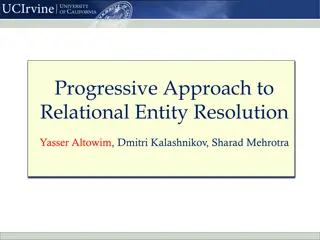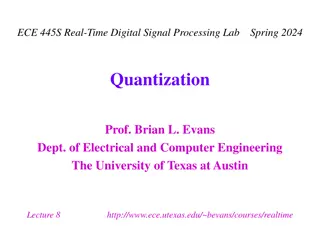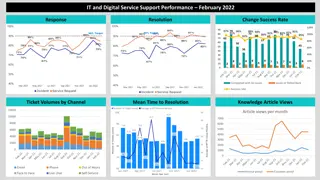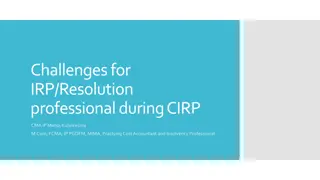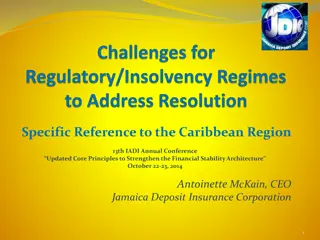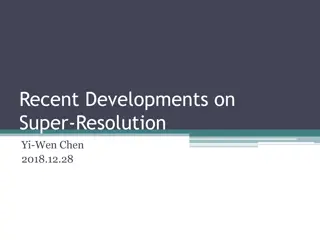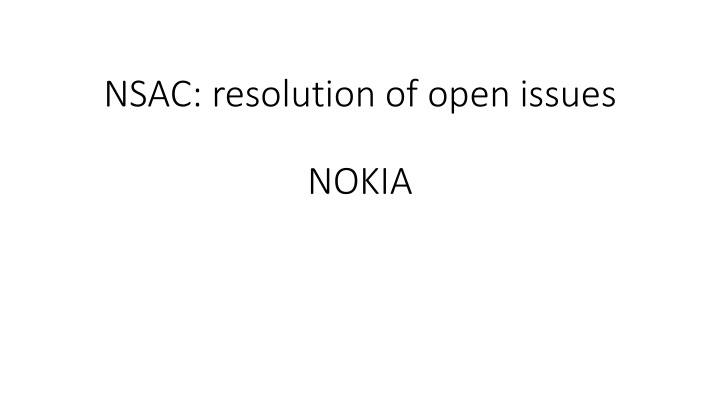
NSAC Resolution of Open Issues and Configuration of S- NSSAIs
Explore the resolution of open issues for NSAC and the configuration of S-NSSAIs. Learn about subscription data, UE subscription types, network slicing, and more to streamline deployment and ensure continuity of service. Find out about EPS counting support and proposed solutions for improved user experience in 5G systems.
Download Presentation

Please find below an Image/Link to download the presentation.
The content on the website is provided AS IS for your information and personal use only. It may not be sold, licensed, or shared on other websites without obtaining consent from the author. If you encounter any issues during the download, it is possible that the publisher has removed the file from their server.
You are allowed to download the files provided on this website for personal or commercial use, subject to the condition that they are used lawfully. All files are the property of their respective owners.
The content on the website is provided AS IS for your information and personal use only. It may not be sold, licensed, or shared on other websites without obtaining consent from the author.
E N D
Presentation Transcript
Configuration of S Configuration of S- -NSSAIs subject to NSAC vs subject to NSAC vs subscription data subscription data NSSAIs Table 5.2.3.3.1-1: UE Subscription data types Slice Selection Subscription data (data needed for Slice Selection as described in clause 4.2.2.2.3 and in clause 4.11.0a.5) Subscribed S-NSSAIs The Network Slices that the UE subscribes to. In roaming case, it indicates the subscribed network slices applicable to the serving PLMN (NOTE 11). The Subscribed S-NSSAIs marked as default S- NSSAI. In the roaming case, only those applicable to the Serving PLMN (NOTE 12). The Subscribed S-NSSAIs marked as subject to NSSAA. Default S-NSSAIs S-NSSAIs subject to Network Slice-Specific Authentication and Authorization Network Slice Simultaneous Registration Group (NSSRG) Information Optionally, for each S-NSSAI in the Subscribed S- NSSAIs, the one or more value of Network Slice Simultaneous Registration Group(s) (NOTE 11) associated with the S-NSSAI. While NSAC is a property per S- NSSAI and not per UE, we have examples of features that apply per S-NSSAI or even DNN or (S-NSSAI, DNN) that are subject to subscription information The benefits are clear: avoid global configuration of AMFs/NSSFs Fast commissioning and decommissioning Change based on update of subscription data SMF Selection Subscription data (data needed for SMF Selection as described in clause 6.3.2 of TS 23.501 [2]) SUPI SMF Selection Subscription data contains one or more S-NSSAI level subscription data: S-NSSAI Indicates the value of the S-NSSAI. Key Subscribed DNN list Default DNN List of the subscribed DNNs for the UE (NOTE 1). The default DNN if the UE does not provide a DNN (NOTE 2). List of DNNs that are used for aerial services (e.g. UAS operations or C2, etc.) as described in TS 23.256 [80]. (see NOTE 13). Indicates whether LBO roaming is allowed per DNN, or per (S-NSSAI, subscribed DNN). Indicates whether EPS interworking is supported per (S-NSSAI, subscribed DNN). Indication whether the same SMF for multiple PDU Sessions to the same DNN and S-NSSAI is required. When present, indicates, per S-NSSAI and per DNN, that NEF based infrequent small data transfer shall be used for the PDU Session (see NOTE 8). When static IP address/prefix is used, this may be used to indicate the associated SMF information per (S-NSSAI, DNN). DNN(s) subject to aerial services LBO Roaming Information Interworking with EPS indication list Same SMF for Multiple PDU Sessions to the same DNN and S-NSSAI Invoke NEF indication SMF information for static IP address/prefix Having NSAC requirements for S-NSSAIs part of subscription information is a necessary condition for ease of deployment: proposed way forward is to make NSAC and EPS Counting requirement part of subscription data.
EPS Counting support Support of EPS counting is required by GSMA and is based on the number of PDN sessions in EPS and number of UEs with at least one PDN connection in EPS Benefits include 1. Uniform constraints irrespective of the access technology/system 2. Ability to ensure continuity of service in the face of Intersystem mobility. Problem: do we still benefit from UE counting triggered by AMF in slices for which EPS counting is active? It seems to create non uniform experience and also the potential for dropped sessions in 5GS when UEs without sessions in 5GS cause UEs with sessions to not be able to use the 5GS It causes the need to have separate counting interactions (per UE and per PDU/PDN session) at the SMF+PGW-c. This in turn causes the need of additional signalling to keep coherent counters when the result of UE NSAC and PDU sessions NSAC are not aligned (see NEC CRs at last meeting) Having both SMF+PGW-c and AMF engaged in Counting of UEs is not productive and actually severely complicates the system while bringing mostly downsides: Proposal: AMF-triggered counting not needed and the SMF+PGWc should only update the #of PDU sessions/PDN connections towards the NSACF per UE-ID and then the same NSACF perform both UE and PDU sessions/PDN connections NSAC
Home Home- -based control in roaming based control in roaming This is needed for two reasons: 1. A Slice is allowed to have a mix of LBO and non LBO sessions, so this is the only way to make it possible to enforce one quota for PDU sessions per slice. 2. A slice can be used in roaming and non roaming at the same time, so this is the only way for the HPLMN to be able to report instantaneously to its customer the number of UEs per Slice in which PLMN, and also to enforce a single quota of UEs in the slice (also, GSMA does not define a quota per VPLMN as part of NG.116, so the scenario of single global quota needs support). Having Home control of quota enforcement is necessary condition to meet basic requirements: proposed way forward is to make it possible for V-NSACF and H-NSACF to interact (V-NSACF proxying to H-NSACF)
Coexistence of home control and Service area The NSACF for a service area may be simply proxy for centralized decision in a central NSACF This can both work in roaming and non roaming cases Having a proxying mechanism also permits easy handling of different NSACFs per service area and allows the possibility to have a consistently updated centralized counter. Proposal: proxying allows resolving the issue of service continuity also inside a PLMN with Service Areas concept by having a single quota across SAs, if so desired.

